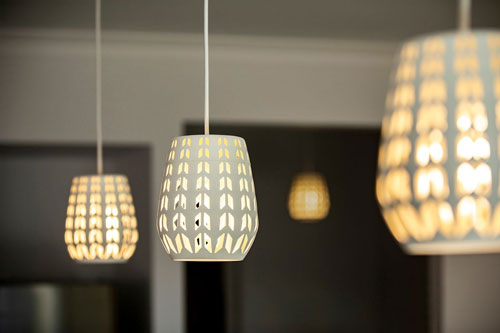Three-dimensional printed luminaires are starting to gain acceptance in the Australian market, says local supplier Limelite.
The company was founded after lighting industry executive Paul Hearne ttended a seminar on 3D printing at the Swinburne University of Technology. All of a sudden, Paul realised the flexibility offered by additive technologies could help build more customised luminaires at a lower cost and with great added value, in contrast to having them fabricated in traditional ways.
What began as a premature discovery ended up in a restructuring of his company, including an expansion of the facilities and the appointment of a specialised internal design and manufacturing team.
Ultimately, Limelite moved from a project lighting company advising end-users on the lighting solutions of their needs, to an advanced 3D manufacturing business in only a few short years.
Hearne and his design team – led by his chief designer Nigel Brockbank – launched a joint project with industrial designers working at Swinburne University.
As a result, the ‘On Track’ lighting collection was developed, the first lighting Limelite range that was almost entirely 3D printed.
The ‘On Track’ range was designed for additive manufacturing from scratch. After the moment the first 3D printed Luminaires hit the market, Limelite started to expand its 3D printing operations.
Hearne believes that the future of fabrication is vastly different from today. 3D printing will change the way products are designed, fabricated and transported. He believes Limelite is about the ‘localisation’ of manufacturing.
A key advantage, says Hearne, is that with 3D printing on-site, production is closely matched to demand. Limelite makes the luminaires after the orders come in. At the end of the day, using 3D printers for production is cheaper than injection moulding, when tooling and storage costs are included.
It also allows for the enhanced customisation of the fittings.
Customers can ask for slightly ‘tweaked’ designs. For example, if a luminaire has a visible heat sink at the back and the customer wants it covered, that’s do-able with only a small design change.
With traditional manufacturing technologies, they would have to pay for retooling just to make the housing longer to cover the heat sink. With 3D printing the design could be adjusted in a couple of hours and printed accordingly.
The Adelaide-based company has recently offered a range of colours, as its new filament recycling and extrusion machine allows it to add colour with the plastic pellets without needing to finish or add unnecessary steps to the process.
The company’s colour offerings are inspired by its homeland. A popular colour is Rustic, an earthy tone inspired by the Australian outback.
The company’s filament are manufactured in-house using a combination of virgin and recycled material. It uses locally sourced Acrylonitrile Butadiene Styrene (ABS) from a masterbatch supplied by Guilda.
ABS is a thermoplastic with high tensile strength and resistance to corrosion. In addition to this; LimeLite mix additives to the master batch. A flame retardancy additive helps inhibit, suppress and delay combustion while UV stabilisation additives protect the filament from the long-term degradation from UV light.
• Diary date: Circular Lighting Live 2024, Recolight’s flagship conference and exhibition, takes place on Wednesday 9 October 2024 at the Royal College of Physicians in London. Free to specifiers, Circular Lighting Live 2024 will feature leading experts, specifiers and policy makers who will share their insights into forthcoming standards and legislation, emerging technologies and new business models. More info: www.circularlighting.live

